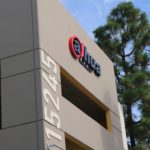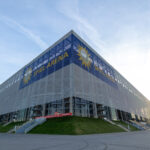Cloud-Based Platforms and ACaaS Drive Access Control Market Toward $15.8 Billion by 2030

The global access control market is set for steady expansion, rising from $ 10.62 billion in 2025 to $ 15.80 billion by 2030, according to a new report from Marketsandmarkets. The growth, at a compound annual rate (CAGR) of 8.3%, is primarily driven by the adoption of IoT-enabled security systems and cloud-based platforms.
The report highlights that Internet of Things (IoT) technologies are enhancing automation efficiency by enabling secure, real-time data exchange. At the same time, cloud integration offers scalability, remote monitoring, and lower maintenance costs. Together, these technologies underpin the rise of Access Control as a Service (ACaaS), enabling organizations to manage access rights across multiple locations through flexible, centralized platforms.
Rapid Growth of Hosted ACaaS
Hosted ACaaS solutions are expected to hold the largest market share in the coming years due to their scalability, flexibility, and cost-effectiveness. Unlike traditional systems, ACaaS removes the need for on-site infrastructure, as data is stored and managed remotely by third-party providers. This setup enables users to manage credentials, access rights, and monitoring tasks from anywhere, ensuring seamless system updates and enhanced cybersecurity resilience.
The study notes that cloud-based access control eliminates the need for client-side software while enabling centralized monitoring across multiple facilities. Automated updates, security patches, and remote troubleshooting contribute to system continuity and reliability—key factors in the growing preference for ACaaS over on-premises models.
A Shift Toward Software-Centric Solutions
Complementary research from Omdia supports these findings, indicating that the access control industry has become increasingly software-driven.
“Cloud-based solutions have emerged as a significant growth driver due to their scalability and enhanced data processing capabilities,” said Bryan Montany, Principal Research Analyst, Physical Security at Omdia.
Sectoral and Regional Dynamics
The report underscores that sectors such as oil and gas, pharmaceuticals, power, automotive, and water treatment are investing heavily in modern access control to protect critical infrastructure from unauthorized access and cyber threats.
At the same time, residential applications are expanding rapidly, with smart locks and integrated video surveillance becoming standard features of connected homes. This trend aligns with the broader growth of smart buildings, where automated management systems reduce energy consumption and improve operational efficiency.
Marketsandmarkets estimates that the ID verification market will more than double from $14.34 billion in 2025 to $29.32 billion by 2030, while the smart buildings segment will grow at a similar pace, registering a CAGR of 15.6%.
North America Leads Global Adoption
North America currently leads the global access control market, fueled by rising demand for cloud-based services, mobile credentialing, and biometric authentication.
Organizations in the region—including the US Department of Defense and Department of Homeland Security—have long utilized biometric verification for both physical and digital access control, reinforcing trust in next-generation solutions.




















